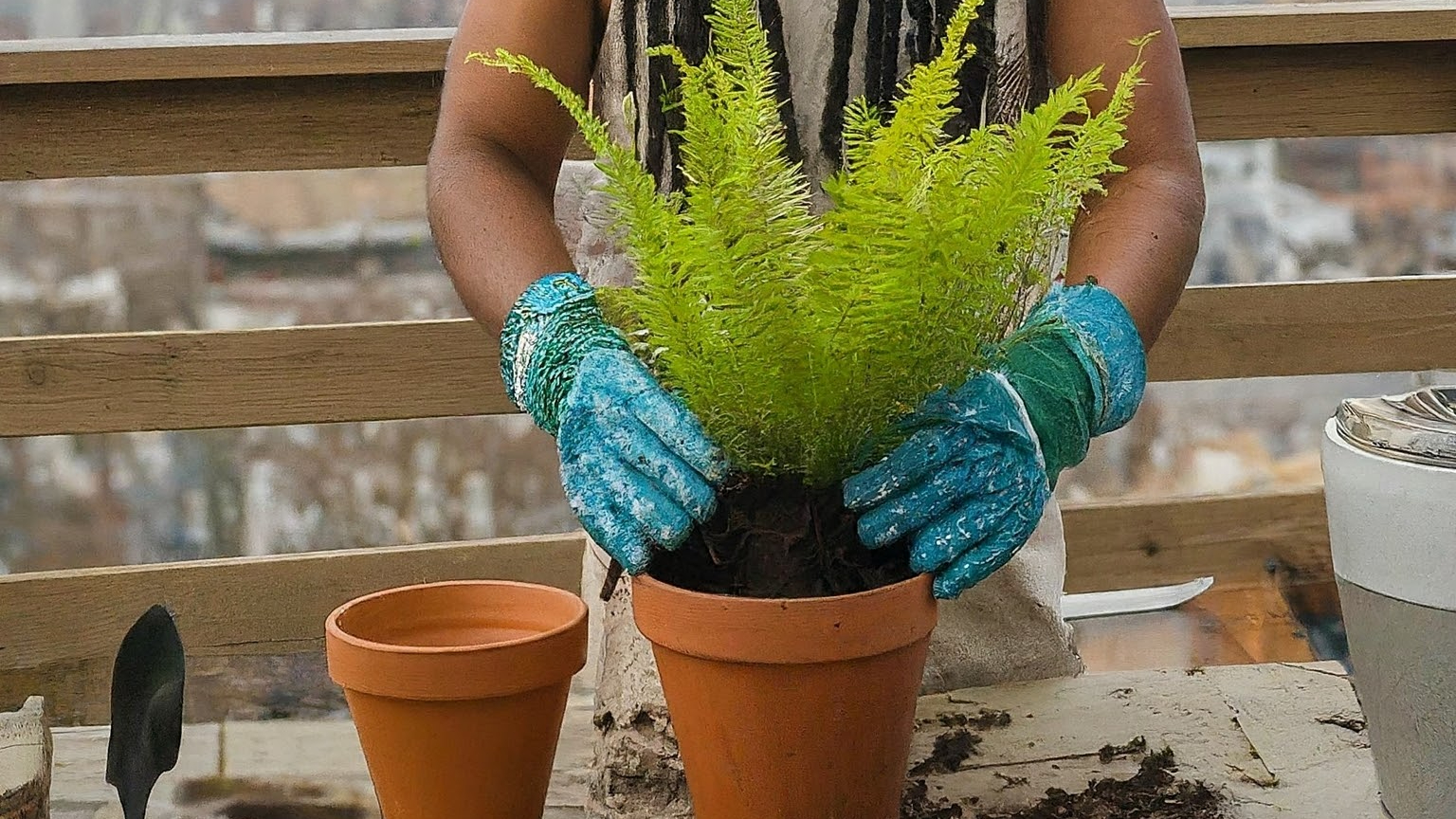Last updated on March 8th, 2024 at 04:26 am
Plants, with their lush foliage and vibrant blooms, bring life and beauty into our homes and surroundings. Whether you’re an experienced gardener or just starting with a few potted plants, knowing when to repot plants is essential for their health and vitality. In this guide, we’ll explore the signs that indicate it’s time to repot your plants and offer tips for a successful repotting process. Understanding when to repot plants is crucial for ensuring they have enough space for root growth and access to essential nutrients.
Contents
Signs Indicating When to Repot Plants
Recognizing the signs indicating when to repot plants is essential for maintaining their health and promoting optimal growth. In this section, we’ll explore several indicators that signal the need for repotting your plants.
Root Boundness
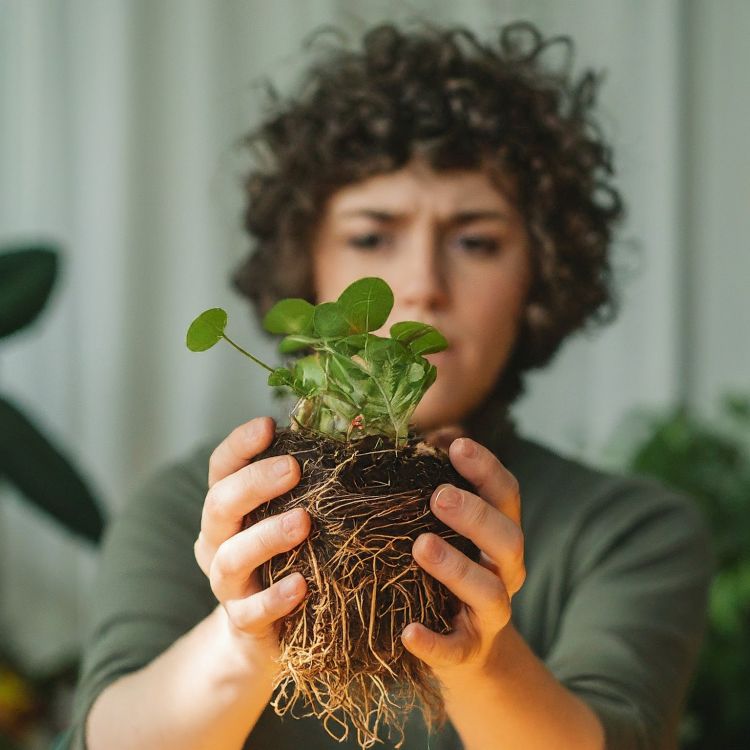
A common trigger for repotting plants arises when they become root-bound, a condition where their roots outgrow the available space in their current pot. Root-boundness leads to tightly packed roots circling the root ball, hindering the plant’s growth and health. Discerning the signs of root-boundness is crucial for ensuring the well-being of your plants and knowing when to repot plants.
One unmistakable indicator of root-boundness is observing roots protruding from the drainage holes at the bottom of the pot. Additionally, slowed growth and ineffective water absorption, evidenced by water running straight through the pot without being absorbed by the soil, further confirm the need for repotting.
Another sign is when to repot plants when plants are seemingly pushed upwards by their roots. This displacement signifies that the roots have become overcrowded and require a larger pot to accommodate their growth. Monitoring these cues and promptly repotting your plant when root-boundness is observed is essential for sustaining its vitality and promoting healthy development.
Potting Mix Breakdown
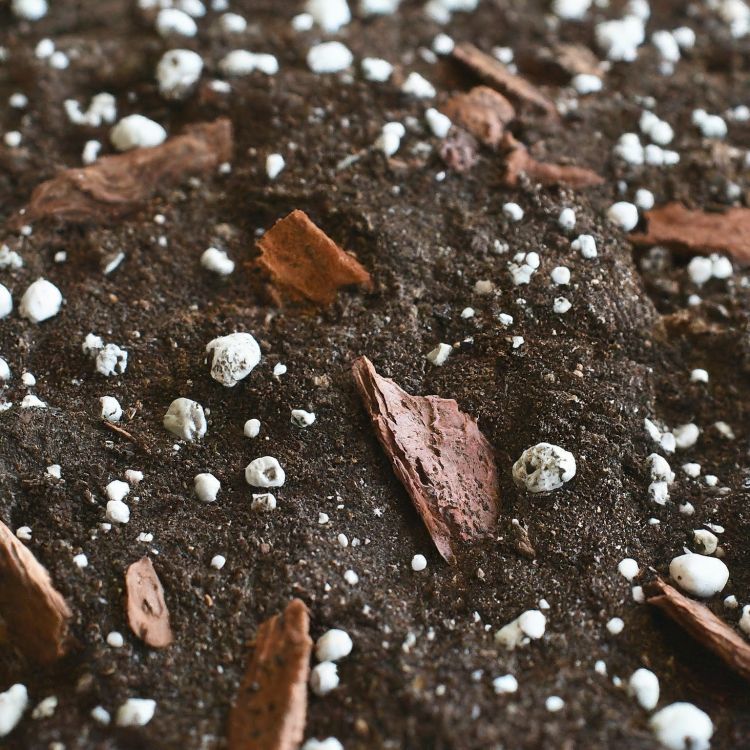
As plants thrive in their designated pots, the potting mix they inhabit plays a vital role in sustaining their well-being. However, over time, this mix can undergo a process known as breakdown, leading to potential challenges for the plant’s growth and health.
Potting mix breakdown occurs when the components within the soil become compacted, losing their original structure and impeding the mix’s ability to provide essential drainage and nutrients. This transformation is a gradual process influenced by factors such as watering frequency, plant growth, and environmental conditions.
Recognizing the signs of potting mix breakdown is crucial for maintaining a healthy environment for your plants and knowing when to repot plants. If you observe that the soil in your plant’s pot has become dense, waterlogged, or is retaining excessive moisture, these are indicative of a breakdown in the potting mix. In such cases, the soil loses its ability to drain properly, leading to an increased risk of root rot and other moisture-related issues.
When faced with signs of potting mix breakdown, repotting becomes a necessary intervention. Refreshing the potting mix during repotting serves to revitalize the plant by providing it with a fresh, well-aerated substrate. This new mix ensures improved drainage, prevents waterlogged conditions, and replenishes essential nutrients, creating an optimal environment for the plant to thrive
Stunted Growth
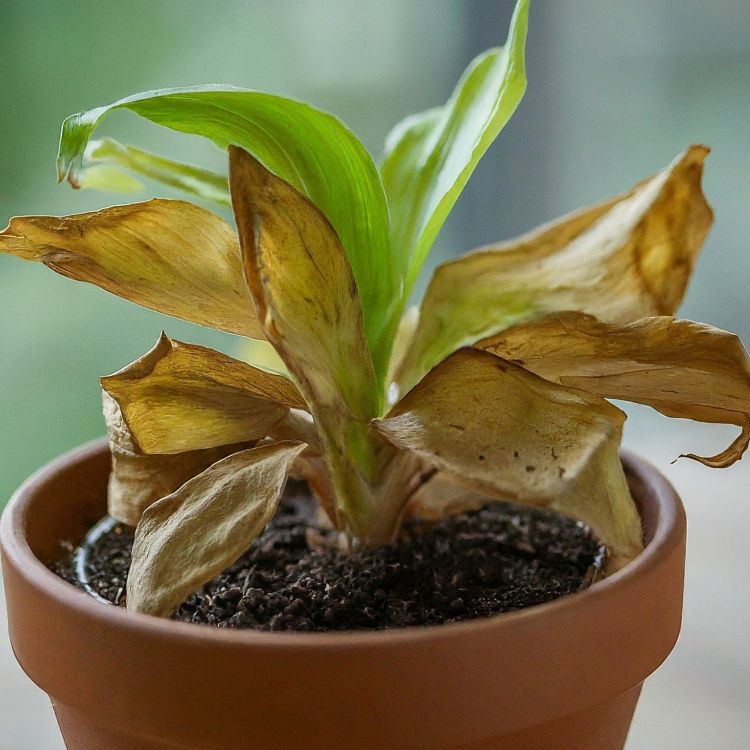
Stunted growth in plants, a concerning phenomenon, often serves as a telltale sign that adjustments are needed in their living conditions. This condition, marked by the plant’s failure to achieve its expected size or development, can result from various factors, with pot size being a significant contributor.
When a plant’s growth becomes stunted despite receiving adequate care and maintenance, it may indicate that it has outgrown its current pot, highlighting the importance of knowing when to repot plants. In essence, the restricted space within the pot inhibits the plant’s root system from expanding freely. As a consequence, the plant struggles to efficiently uptake essential nutrients and water, crucial for its growth and vitality.
Seasonal Repotting
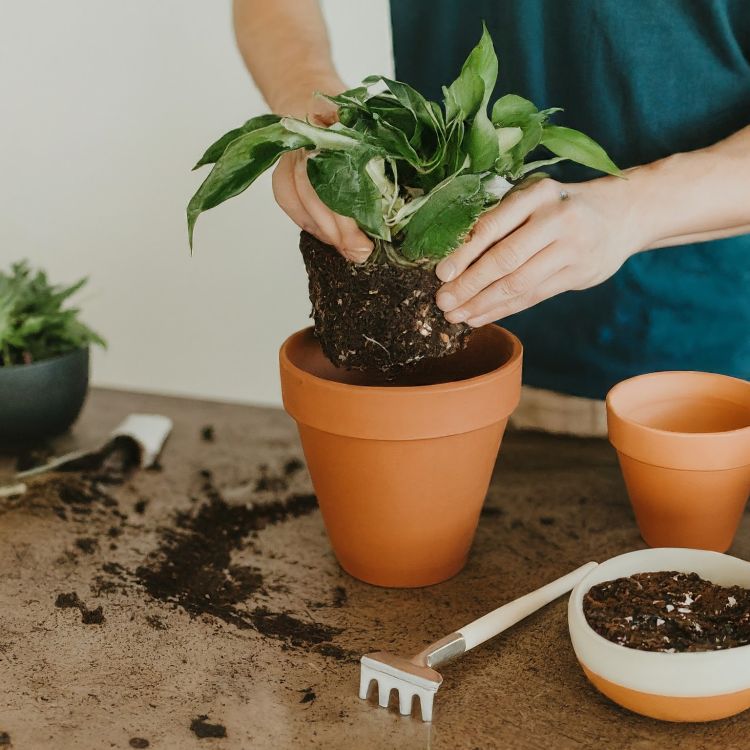
In the realm of plant care, seasonal repotting emerges as a strategic practice to promote optimal growth and vitality. While the signs of root-boundness, potting mix breakdown, and stunted growth serve as primary indicators for repotting, considering the seasonal aspects further enhances the efficacy of this process.
Spring stands out as the preferred season for repotting most houseplants. During this time, plants typically enter a phase of active growth, making it opportune to provide them with fresh soil and ample space for root expansion. Repotting in spring ensures that plants can capitalize on their growth momentum, fostering robust development and flowering.
However, it’s essential to acknowledge that not all plants adhere strictly to the spring repotting schedule. Some species may exhibit preferences for repotting during fall or winter, periods when they enter dormancy. Repotting during these seasons allows plants to undergo the transition with minimal disruption, enabling them to emerge rejuvenated and ready for vigorous growth once spring arrives.
Researching the specific requirements and growth patterns of individual plants is paramount in determining the optimal timing for repotting. When to repot plants is a critical aspect of maintaining their well-being and integrating seasonal repotting practices enhances their growth and vitality.
6 Tips for Repotting Plants Successfully
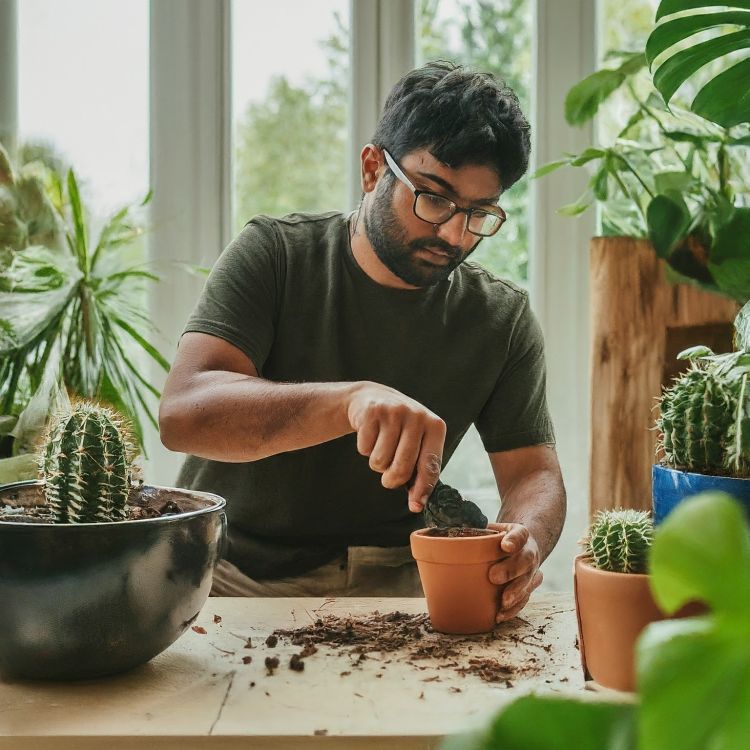
After understanding when to repot plants, here are 6 easy tips for successfully repotting plants.
Extract the plant from its existing container or grow pot
To begin, tilt your plant sideways and carefully grasp it by the stems or leaves. Lightly tap the underside of the current vessel until the plant loosens and can be removed. In some cases, you may need to provide a gentle pull at the base of the stems to assist in the process.
Loosen the plant’s roots with care
Gently separate the plant’s roots using your fingers. Trim any excessively long, threadlike roots, ensuring to preserve the thicker roots near the foliage’s base. If the plant is root-bound, characterized by tightly circling roots around the plant’s base, carefully untangle the roots and trim them as needed.
Dispose of the previous potting mix
Eliminate approximately one-third or more of the previous potting mix encasing the plant’s roots. Over time, as the plant grew, it likely depleted some or all of the nutrients present in the existing mix. Thus, it’s essential to replace it with fresh potting mix or soil when repotting plants. This ensures the provision of vital nutrients for the plant’s continued health and growth.
Introduce fresh potting mix
Begin by pouring a layer of new potting soil into the vacant planter and firmly packing it down, ensuring to elimination of any trapped air pockets. If your planter lacks a drainage hole, consider lining the bottom with lava rocks or a similar alternative (such as gravel or rocks) before adding the potting mix. The objective is to establish crevices that facilitate the drainage of excess water away from your plant’s roots, thereby safeguarding their health and vitality.
Position your plant
Place your plant atop the newly added layer of potting mix within the planter, ensuring it is centered. Proceed to add additional potting mix around the plant until it is firmly secured. Exercise caution not to overpack the soil in the planter, allowing ample space for the roots to breathe and thrive.
Water and delight
Evenly distribute the potting soil on the surface and water thoroughly. It’s important to note that a freshly repotted plant does not require fertilizer at this stage. Sit back, relax, and enjoy watching your rejuvenated plant settle into its refreshed environment.
FAQs
When should I repot my plants?
Repotting your plants is necessary when you observe signs such as root-boundness, potting mix breakdown, stunted growth, or if it’s the appropriate season for repotting. These signs indicate that your plant needs more space for root growth and access to essential nutrients, highlighting the importance of knowing when to repot plants.
How do I know if my plant is root-bound?
Signs of root-boundness include roots protruding from drainage holes, roots tightly circling the root ball, or the plant becoming unstable in its pot. You may also notice slowed growth or yellowing leaves, indicating that the roots are struggling to access nutrients and water.
What should I do if my plant is root-bound?
If your plant is root-bound, it’s essential to repot it into a larger container to provide the roots with more space to grow. Gently loosen the roots and trim any excessively long or circling roots before transferring the plant into a fresh potting mix.
Do I need to replace the potting mix when repotting?
Yes, it’s generally recommended to replace at least some of the potting mix when repotting your plants. Over time, the potting mix can become compacted and lose its ability to provide adequate drainage and nutrients. Adding fresh potting mix ensures that your plant has access to the necessary nutrients and promotes healthy root growth.
Can I repot my plant at any time of the year?
While spring is typically the best time for repotting most houseplants due to their active growth phase, you can repot plants throughout the year if necessary. Some plants may prefer to be repotted during their dormant period in fall or winter. It’s essential to research the specific needs of your plant to determine the optimal time for repotting.
What are some tips for successfully repotting plants?
Some tips for successful repotting include carefully extracting the plant from its current container, loosening the roots, disposing of old potting mix, introducing fresh potting mix, and watering thoroughly. These steps help provide your plants with a conducive environment for growth and vitality.
Ensuring Plant Health and Vitality Year-Round
Knowing when to repot your plants is crucial for maintaining their health and vitality. As we’ve explored in this guide, several signs indicate the need for repotting, including root-boundness, potting mix breakdown, stunted growth, and seasonal considerations, highlighting the importance of knowing when to repot plants.
Repotting not only provides your plants with fresh soil and space for root growth but also allows you to address issues such as compacted soil and overcrowded roots. Understanding the seasonal nuances of repotting further enhances your ability to care for your plants effectively, ensuring optimal growth and longevity.
By using the tips and techniques outlined in this guide, you can embark on successful repotting endeavors and create an environment where your plants thrive year-round. Whether you’re a seasoned gardener or just starting with potted plants, the knowledge of when and how to repot your plants is a valuable skill that will contribute to the health and beauty of your indoor garden.

